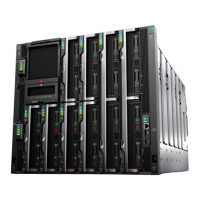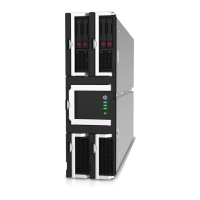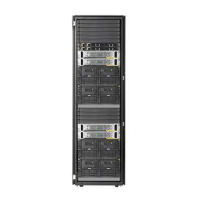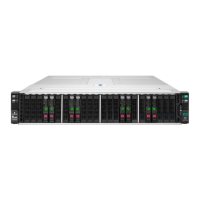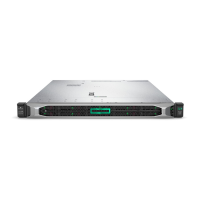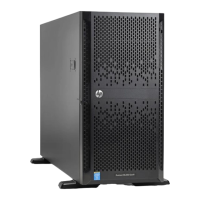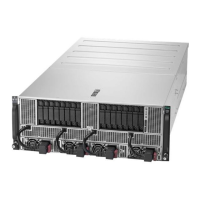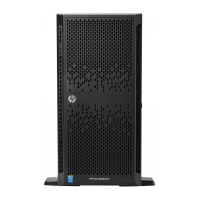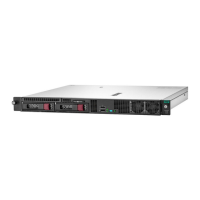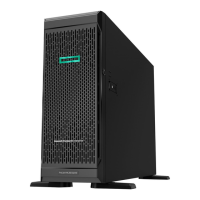Chapter 4: Server troubleshooting 24
Callout Function LED State
Flashing
amber
The drive is not configured and predicts the drive will fail.
Solid amber The drive failed.
Off The drive is not configured by a RAID controller.
Rotating
green
Drive actvity.3 Activity ring
Off No drive activity.
Solid white Do not remove the drive. Removing the drive causes one or more of the
logical drives to fail.
4 Drive
Removal
Off Removing the drive does not cause a logical drive to fail.
Front drive numbering
The front drive slots are numbered for identification purposes. The number of servers and corresponding number
of drives varies with the implementation.
The drive numbering sequence, is reported by the hypervisor manager or HPE OmniStack CLI commands, and
enables you to identify a specific drive for troubleshooting. For information on the CLI commands, see the HPE
OmniStack 3.7.6 for vSphere Command Reference Guide.
The total number and placement of drives is based on the number of servers and the server type. Slots without a
drive contain a filler and cannot be used to install additional drives.
In a fully populated HPE SimpliVity 170 Gen10 system with four servers and 24 drives, drives associated with
server 1 are numbered 1-1 through 1-6, drives associated with server 2 are numbered 2-1 through 2-6, drives
associated with server 3 are numbered 3-1 through 3-6, and drives associated with server 4 are numbered 4-1
through 4-6.
An HPE SimpliVity 190 Gen10 system consists of two 2U servers supporting a total of 12 drives in the chassis.
Server 1 uses drives 1-1 through 1-3 and drives 2-1 through 2-3. Server 3 uses drives 3-1 through 3-3, and 4-1
through 4-3.
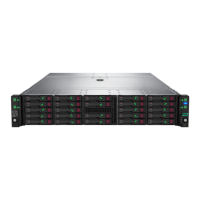
